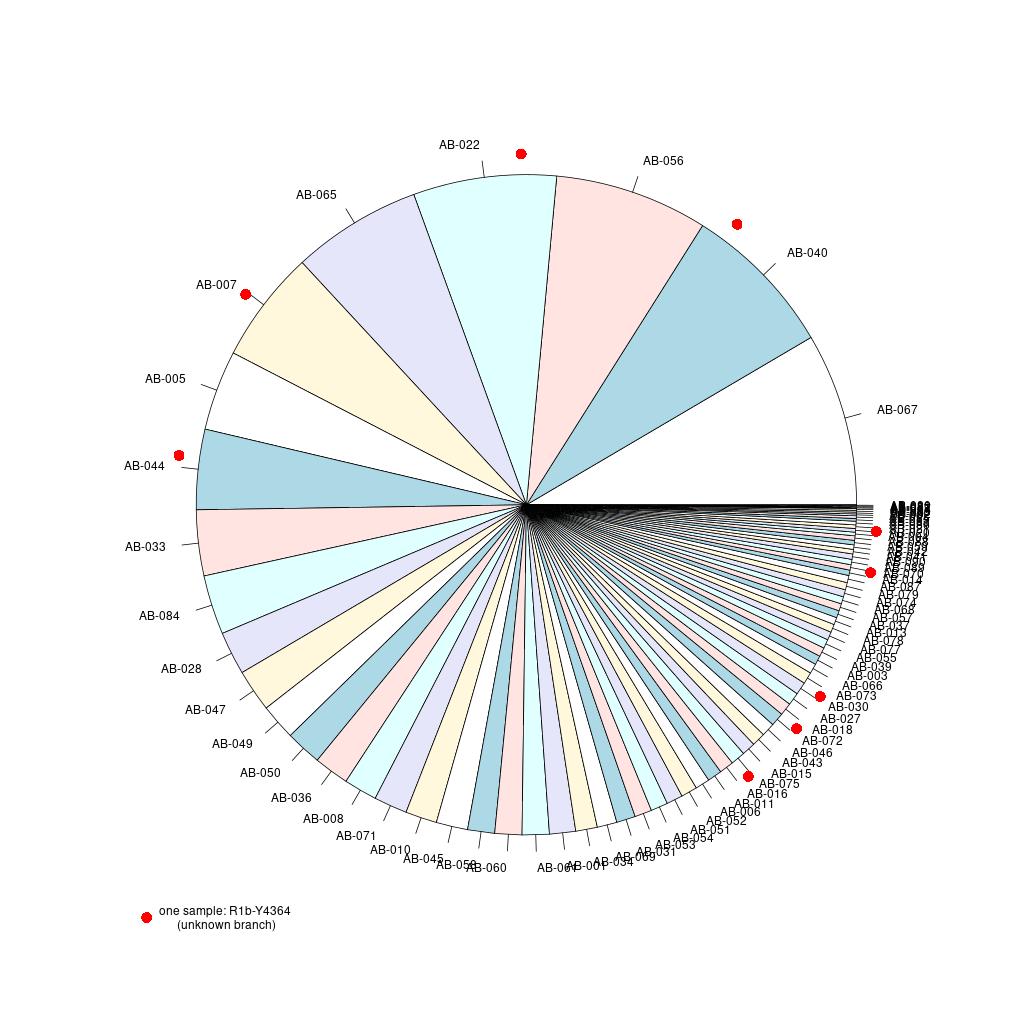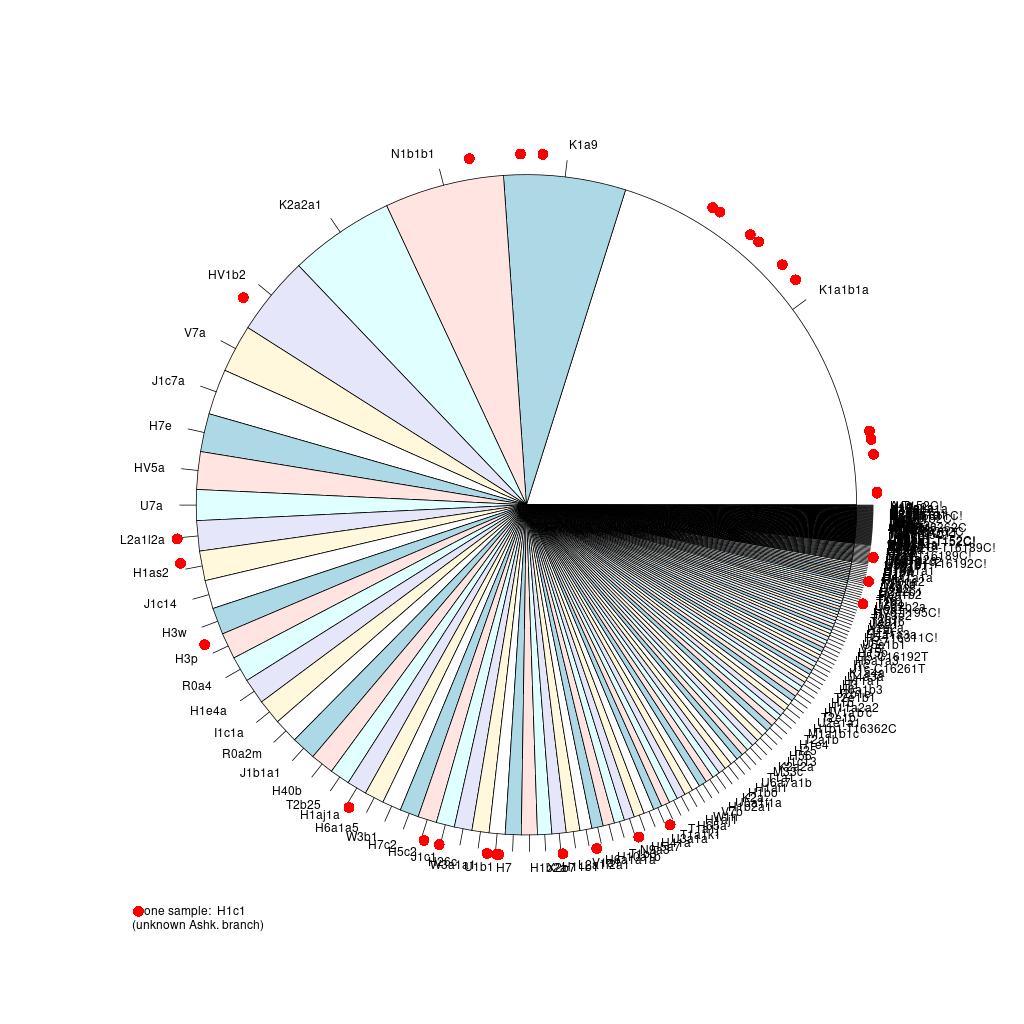






 |  |  |  |  |  | 
|
August 2022
Several weeks ago i was informed on the preprint of Waldman et al. (2022) on the DNA results from the Jewish cemetery in the 14th century.
The document has interesting results on the autosomal DNA, and reported also 33 mtDNA results and very general results on the Y-DNA. In the weeks after that two persons independently reported on the Y-DNA results with more accuracy, using the BAM-files that were released. This resulted in 10 fairly accurate Y-DNA results.
I used the 33 mtDNA haplogroups and 10 fairly accurate Y-DNA results to compare with the Ashkenazi branches, as i determined in the past. In the case of Y-DNA, the first collection was based on STR, and we now know that a few of the original reported branches are a shared Jewish branch, in which the combination of lineages had more than average STR-mutations. In this page they are indicated with the shared AB-number.
The size of the different branches depends on the amount of collected samples, and the quality of randomness. For both groups more than 2000 samples were used. The randomness is not 100 percent, since some branches had a leading person to collect more data with higheer quality. More recent collections will improve the statistics, but the overall pattern will remain the same. Both collections were done before this analysis was made, so the datacollections of Ashkenazi branches now and the datacollection of the Erfurt data was independent.
A few of the Y-DNA SNPs that were measured are older than the arrival of the Jews in Europe. In theory these samples could be from a parallel branch. The chances for such a coïncidence are negligable, so i accept the identifactions of the branches.
For both Y-DNA and mtDNA branches the Erfurt samples are positioned in the distribution of the branches. Since sometimes more than one sample was in a branch, e.g. Mtdna K1a1b1a the Erfurt samples were positioned randomly in the branch.


The distribution of the samples in Erfurt is similar as the present Ashkenazi branches. In particular the difference between the large branches and the small branches is not different. If we use the largest branches that have 50% of the present mtDNA and the smallest branches that have 50% of the present mtDNA we have values of 15:15, while the values for Y-DNA are 4:5.
In case the Jews in the Polish-Lithuanian Commonwealth were arriving after the 14th century from a different region, e.g. Khazar or Crimea, we would expect that the distribution over the branches would be different. In case e.g. 25 percent of these Jews would have come from Khazar or Crimea, we would expect that they contributed to the smaller branches. From this data alone it is still possible that some of the branches came from Khazar or Crimea, but the percentage could not have been large.